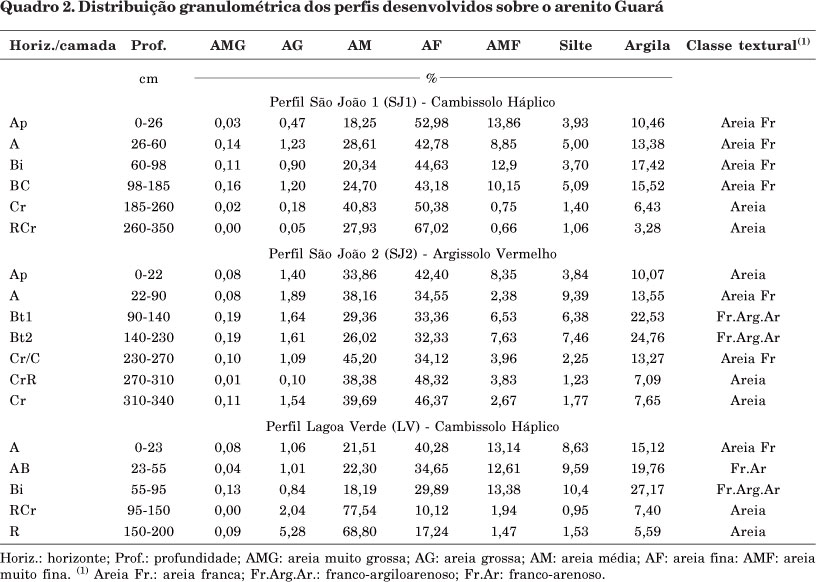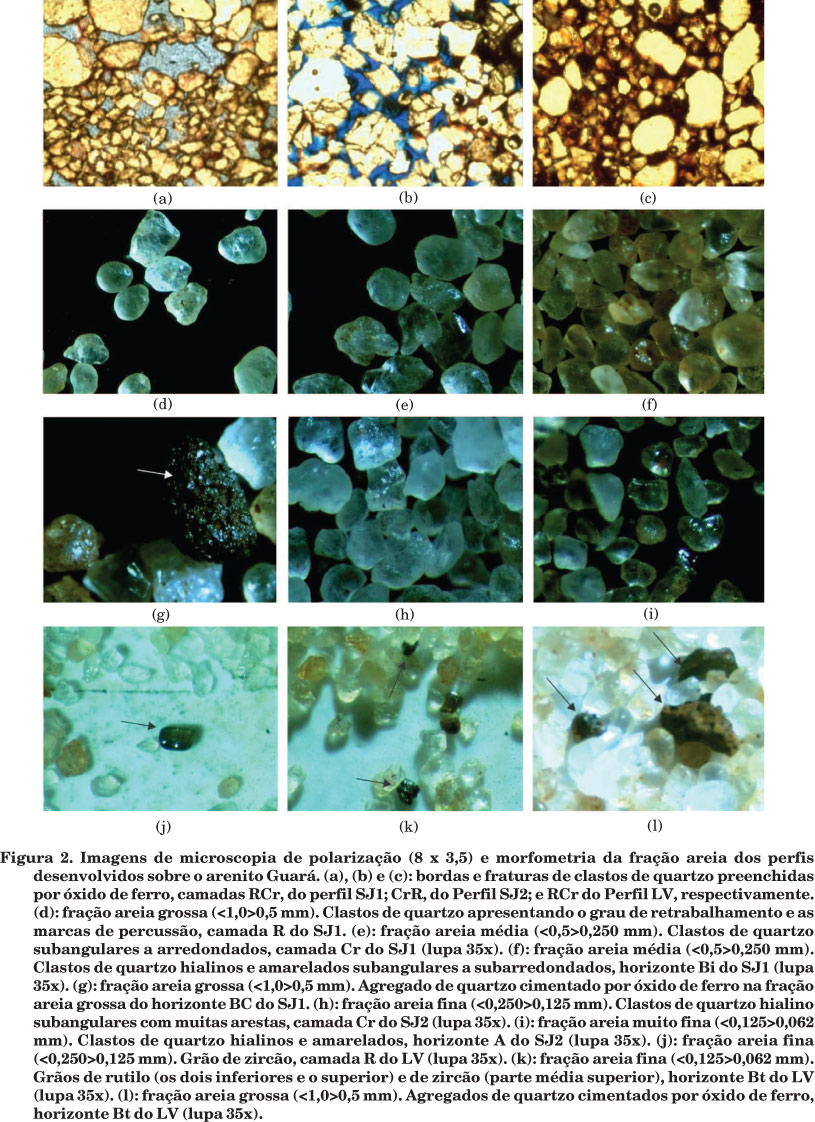In the west and southwest regions of Rio Grande do Sul (RS) there are extensive areas with fragile soils developed from sandy sediments of the continental Mesozoic Paraná Basin. Inappropriate land use has accelerated the process of sandy desertification in these areas. In this case, the knowledge of soils is critical for the choice of appropriate management systems to regain sustainability. The objectives of this study were to understand the evolution and describe the relationships, in terms of origin, between the rock and its respective pedological cover by studying profiles developed from sandstones of the Guará Formation in RS. Soil chemical, physical, mineralogical, and morphological analyses were carried out with samples of two Dystrudept and one Rhodudult profile. There was evidence of external addition of material to the studied profiles, mainly of ilmenite, resulting from the alteration of areas with basic volcanic rocks in the surroundings. The inclusion of allochthonous material in the soil profiles was responsible for a pedogenesis leading to B horizons with higher clay contents, a feature of Ultisols and Cambisols. The data suggest the identification and interpretation of a sixth pedogenetic component, defined as the geological context of the surroundings.
pedology; sandy soils; desertification; Pampa ecosystem





